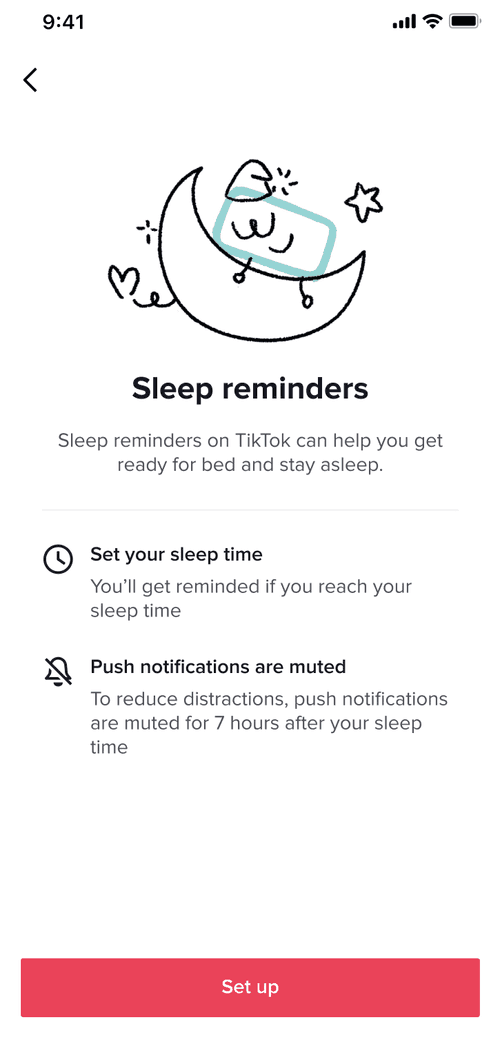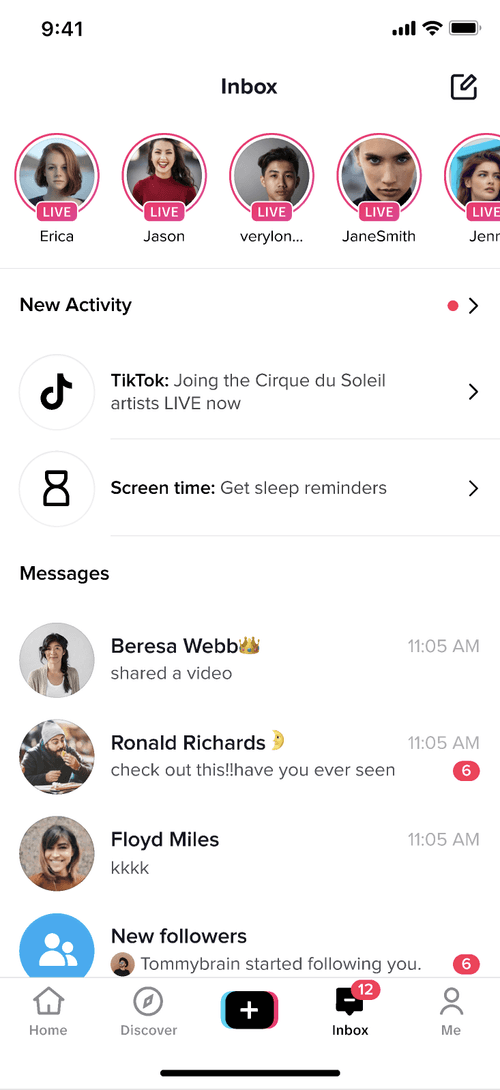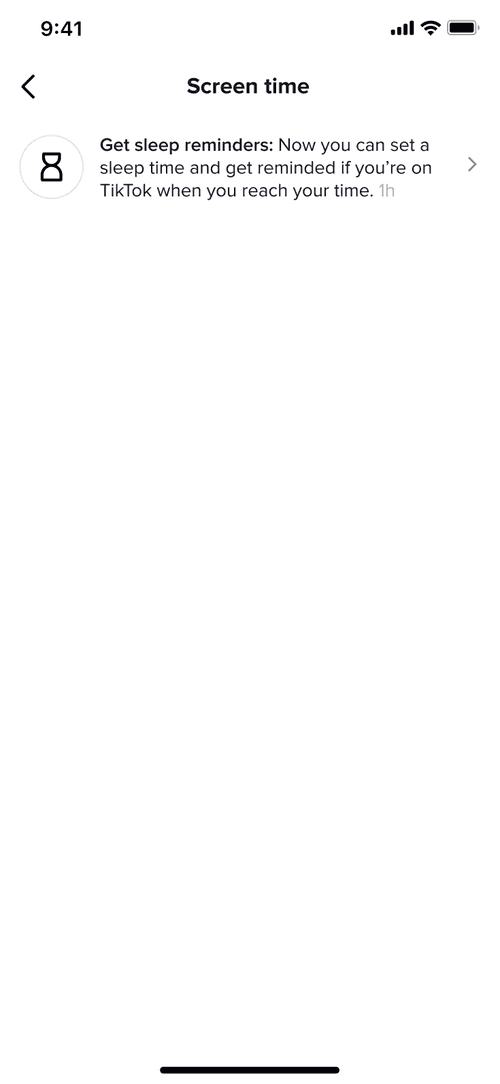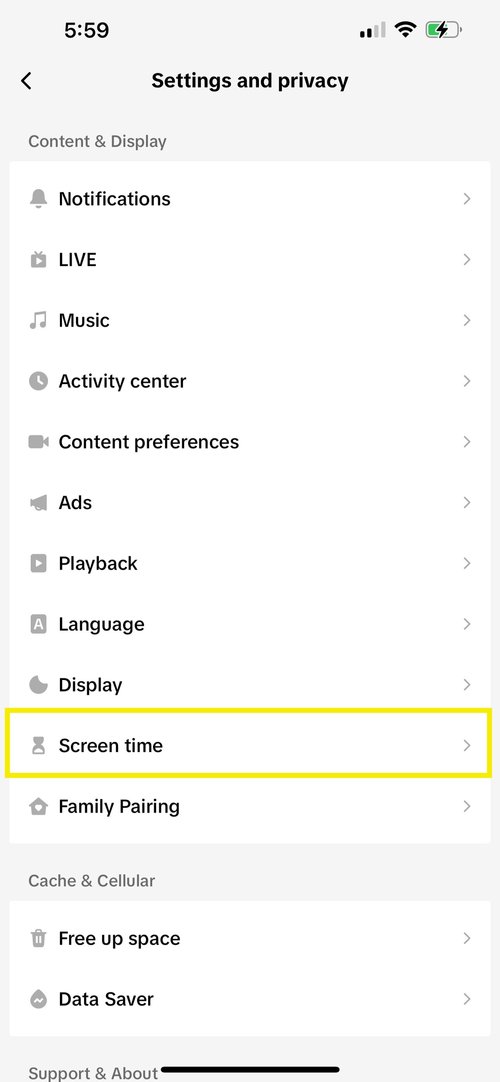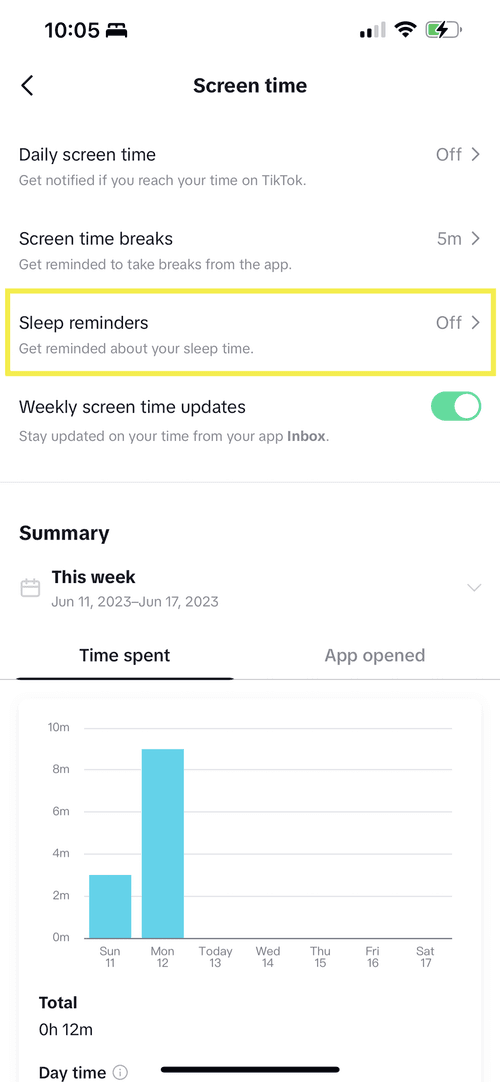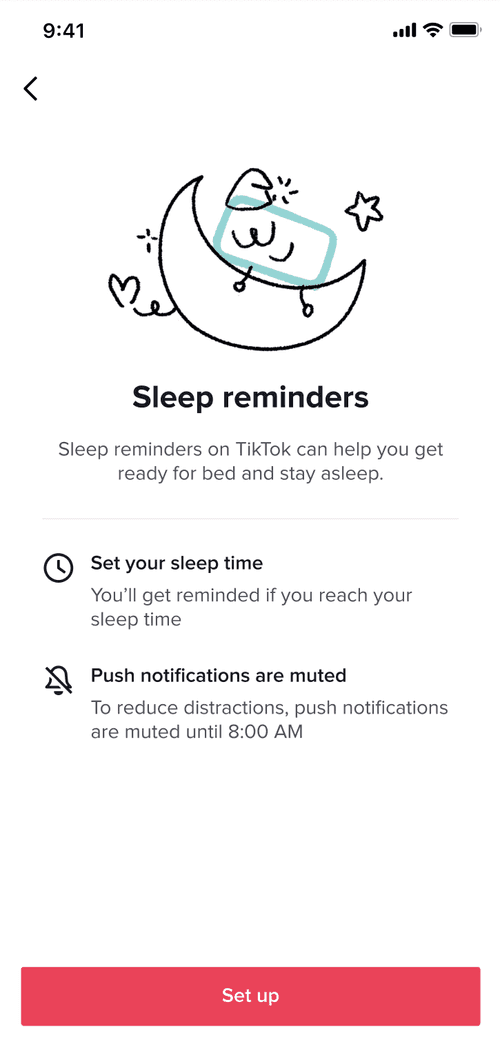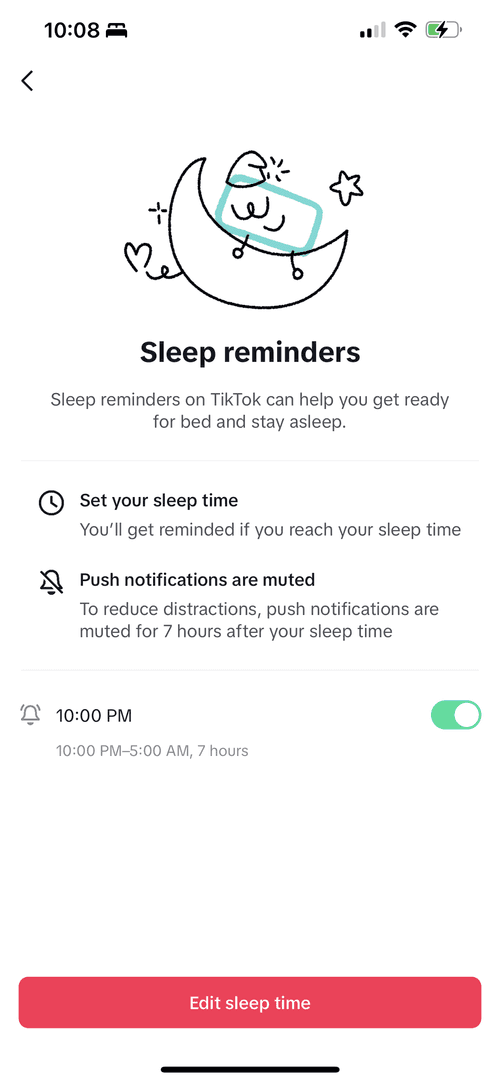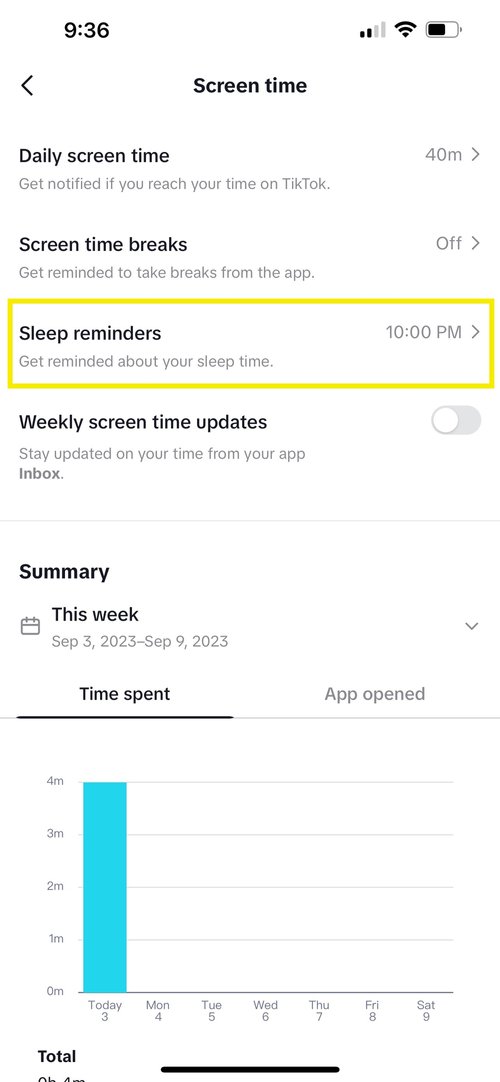Problem
Users
People were active on TikTok when they should be sleeping; data indicated this was a problem for more than 20% of minors and that adults were impacted
Research
Too much screen time can interfere with essential personal responsibilities like sufficient sleep, work, school, and connecting with loved ones
External research suggested that screen time and social media use at night were associated with delayed and inadequate sleep
We knew that TikTok contributed to this problem anecdotally. And since data indicated this was a health concern for people, we wanted to help them manage their screen time at night.
Opportunity
Promote healthier sleep habits
Help people set a bedtime that TikTok would remind them of each night; after that bedtime, TikTok would mute push notifications until morning
Help relevant people, especially minors, reduce screen time at night
Improve public trust
Reduce negative business and reputational impact
People are more likely to churn or reduce activity on TikTok if it negatively impacted their ability to manage their time and tend to their basic needs
TikTok has received negative media coverage as “the worst social media app for sleep”
Reduce regulatory risk by providing people with a sleep feature they could use, keeping autonomy and flexibility in mind
Strategy
Created and led a user testing plan
Identified an opportunity for user testing, using the data to influence cross-functional stakeholders and alleviate subjective opinions
Created and launched the study on UserTesting.com to determine preferences between:
2 versions of the main feature screen (one with bolded, bulleted titles and one without)
2 versions of the sleep reminder notification (one with a "delay" button and one without)
Gained clarity and validation on the content and design direction, based on quantitative and qualitative user feedback from my user test:
Most users preferred bolded, bulleted titles for easier scannability
Most users preferred the sleep reminder notification without the "delay" button
Shared the user test results with the core product team, which drove alignment and helped me resolve several deadlock situations
Co-designed in Figma
Co-created and edited high-fidelity wireframes to explore design options and prepare for the user test
Leveraged the component library to discover the best design solution that matched our content-first direction, working with the product designer to understand where certain components may be useful
Outcome
Decreased screen time at night
13% reduction in people's screen time at night, a significant decrease surpassing the initial goal (10% for minors and 5% for adults)
17% reduction in overall screen time (day and night) after people enabled the feature, indicating their awareness of, and agency over, their screen time habits
Inbox notification
—>
Inbox notification
—>
Settings
—>
Settings
—>
Feature (18 and over)
—>
Feature (13–17)
—>
Sheet
—>
Feature
—>
Settings
—>
Intervention
✓
